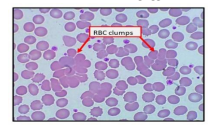Presented in 13th Emirates Pathology, Digital Pathology & Cancer Conference Holiday Inn Dubai, UAE & Virtual
Speaker Name: Dr. Liliana Seicaru (Romania)
Global Journal of Pathology & Laboratory Medicine
Unified Citation Journals, Pathology 2024, ISSN2754-0952
Abstract:
The aim of our study is the analyze the collagen type I and III distribution in slceroderma and lichen sclerosus, from the point of view of what we can observe with conventional and special stains, in optical and polarized microscopy, and demonstrate with the aid of immunohistochemistry.
Lichen sclerosus and morphea are both chronic cutaneous sclerosing diseases that can be sometimes very similar histopathological, the diagnosis being allways a result of complex integration of anamnestic, clinical and laboratory informations1.
We enrolled in our study 30 cases of scleroderma and 30 cases of lichen sclerosus, with non-lesional skin as martor samples. We noted our observations on conventional and special stained slides, in optical and in polarized microscopy. For the last one we used the pycro-sirius red stain, as it has the ability to give some different birefringence of different types of collagen fibres (orange-red for collagen type I, and yellow-green for collagen type III)2,3.
In cases of Morphea we noticed an overall strong orange-red birefringence of the collagen in the superior dermis, and a mixture of yellow-green and orange-red birefringence in the profound dermis. In lichen sclerosus cases we noticed a predominant red-orange birefringence in superior and inferior dermis.
Having some doubts about the reason of that different birefringence, but taking into discussion the anterior literature observations that is a matter of type I or III collagen predominance2,3, we decided to analyze these collagen types with the aid of immunohistochemistry by using col1a2 antibody (e-6): m-iggλ bp-hrp bundle (sc-524005) – immunoperoxidase method – and col3a1 antibody (b10) fitc (sc-271249) – direct immunofluorescence method.
In consequence, we were able to correlate our optical and polarized microscopy observations with immunohistochemical distribution of collagen type I and III.
To our knowledge, this study is the first one of this type in medical literature.
No conflict interests to declare.
Tags:
Cancer, Immunodeficiency States, Immunophenotyping, Molecular Diagnostics & Proteomics, Evolutionary Medicine, Functional Identification & Biomarkers, Hematopoietic & other Malignancies, Anatomical Pathology, Clinical Pathology, Dermato Pathology, Forensic Pathology, Hemato Pathology, Histopathology, Molecular Pathology, Surgical Pathology, Histopathology, Chemical Pathology, Hematopathology, Histopathology, Cytopathology, Forensic Pathology, Dermatopathology, Clinical Biochemistry, Infection Control, Cytokines, Enzymology, Endocrinology, Cellular Lineage, Virology, Rheology, Toxicology, Neuropathology, Diagnostic Pathology, Mesothelial Proliferations, Transfusion medicine, Clinical microbiology, Cytogenetics, Molecular Genetics Pathology, Immunopathology, Veterinary Pathology, Anatomical Pathology, General Pathology
Upcoming Conferences;
- 14th Emirates Pathology, Digital Pathology & Cancer Conference
More Details: https://pathology.universeconferences.com/
Submit your abstract/research papers/case- study here: https://pathology.universeconferences.com/submit-abstract/
Attend as a Speaker/Poster/Delegate In-person kindly register here: https://pathology.universeconferences.com/registration/
Attend as a Speaker/Poster/Delegate virtually kindly register here: https://pathology.universeconferences.com/virtual-registration/ - 12th World Digital Pathology & AI UCGCongress
More Details: https://digitalpathology.ucgconferences.com/
Submit your abstract/research papers/case- study here: https://digitalpathology.ucgconferences.com/submit-abstract/
Attend as a Speaker/Poster/Delegate In-person kindly register here: https://digitalpathology.ucgconferences.com/registration/
Attend as a Speaker/Poster/Delegate virtually kindly register here: https://digitalpathology.ucgconferences.com/online-registration/



